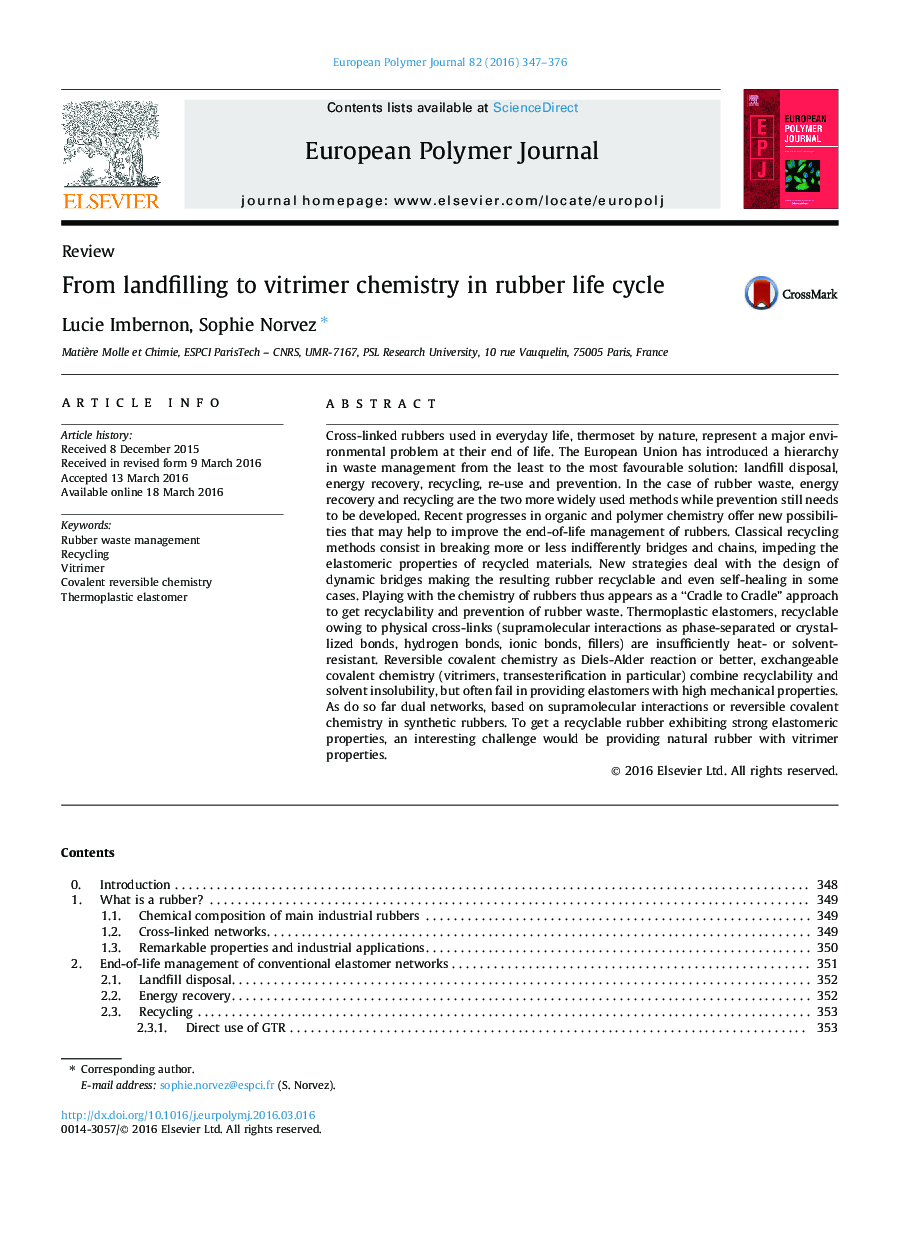| کد مقاله | کد نشریه | سال انتشار | مقاله انگلیسی | نسخه تمام متن |
|---|---|---|---|---|
| 1399124 | 1501353 | 2016 | 30 صفحه PDF | دانلود رایگان |
• Disposal and recycling of waste rubbery objects: current state of the art.
• Chemical prospects towards rubber waste prevention, waste management and recycling.
• Designing the recyclability at the cross-linking step is potentially a good solution.
• Overview of the use of non-permanent chemistry in rubber cross-linking.
• Vitrimer chemistry emerges as promising to design environmentally friendly rubbers.
Cross-linked rubbers used in everyday life, thermoset by nature, represent a major environmental problem at their end of life. The European Union has introduced a hierarchy in waste management from the least to the most favourable solution: landfill disposal, energy recovery, recycling, re-use and prevention. In the case of rubber waste, energy recovery and recycling are the two more widely used methods while prevention still needs to be developed. Recent progresses in organic and polymer chemistry offer new possibilities that may help to improve the end-of-life management of rubbers. Classical recycling methods consist in breaking more or less indifferently bridges and chains, impeding the elastomeric properties of recycled materials. New strategies deal with the design of dynamic bridges making the resulting rubber recyclable and even self-healing in some cases. Playing with the chemistry of rubbers thus appears as a “Cradle to Cradle” approach to get recyclability and prevention of rubber waste. Thermoplastic elastomers, recyclable owing to physical cross-links (supramolecular interactions as phase-separated or crystallized bonds, hydrogen bonds, ionic bonds, fillers) are insufficiently heat- or solvent-resistant. Reversible covalent chemistry as Diels-Alder reaction or better, exchangeable covalent chemistry (vitrimers, transesterification in particular) combine recyclability and solvent insolubility, but often fail in providing elastomers with high mechanical properties. As do so far dual networks, based on supramolecular interactions or reversible covalent chemistry in synthetic rubbers. To get a recyclable rubber exhibiting strong elastomeric properties, an interesting challenge would be providing natural rubber with vitrimer properties.
Figure optionsDownload as PowerPoint slide
Journal: European Polymer Journal - Volume 82, September 2016, Pages 347–376
